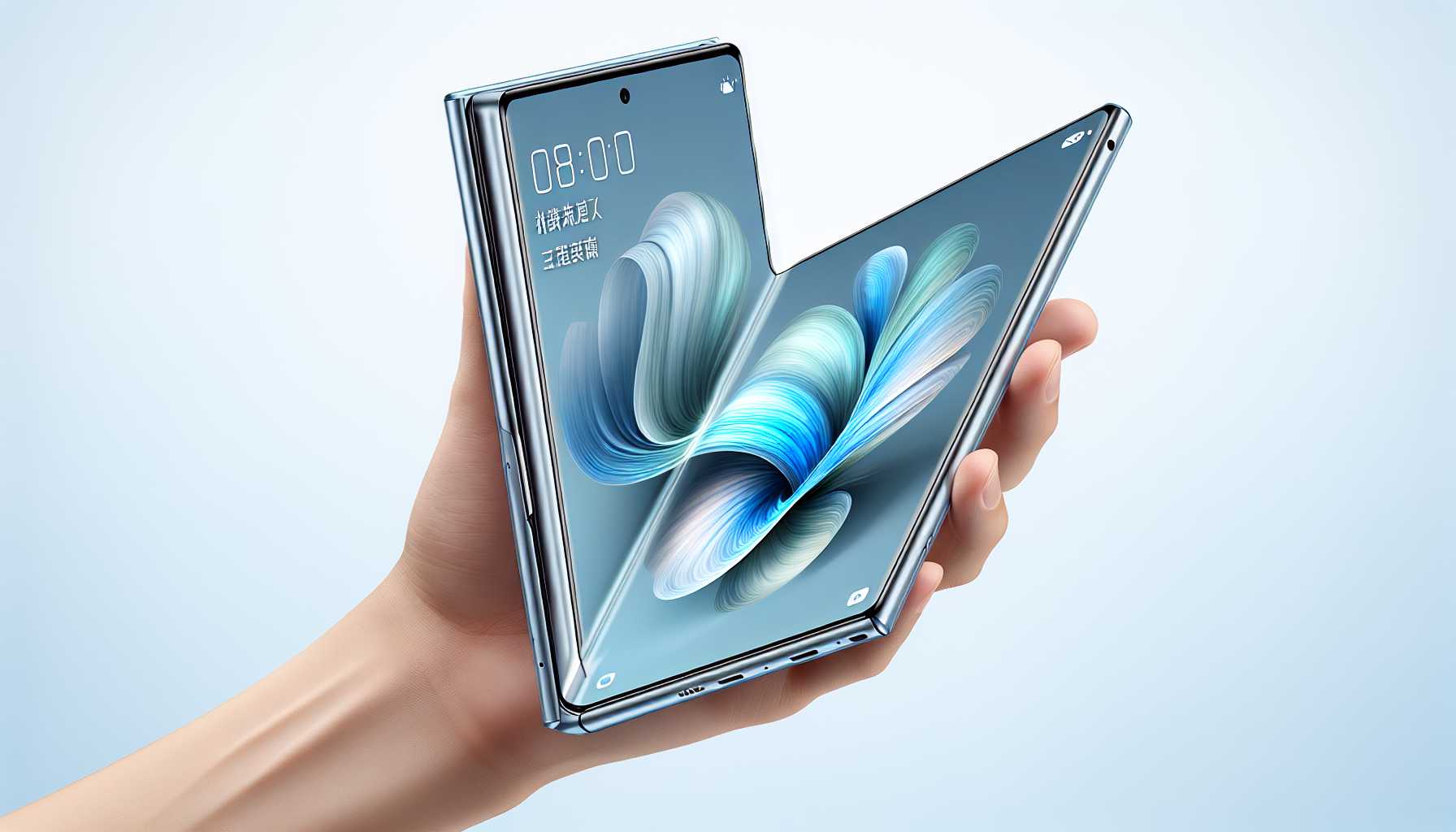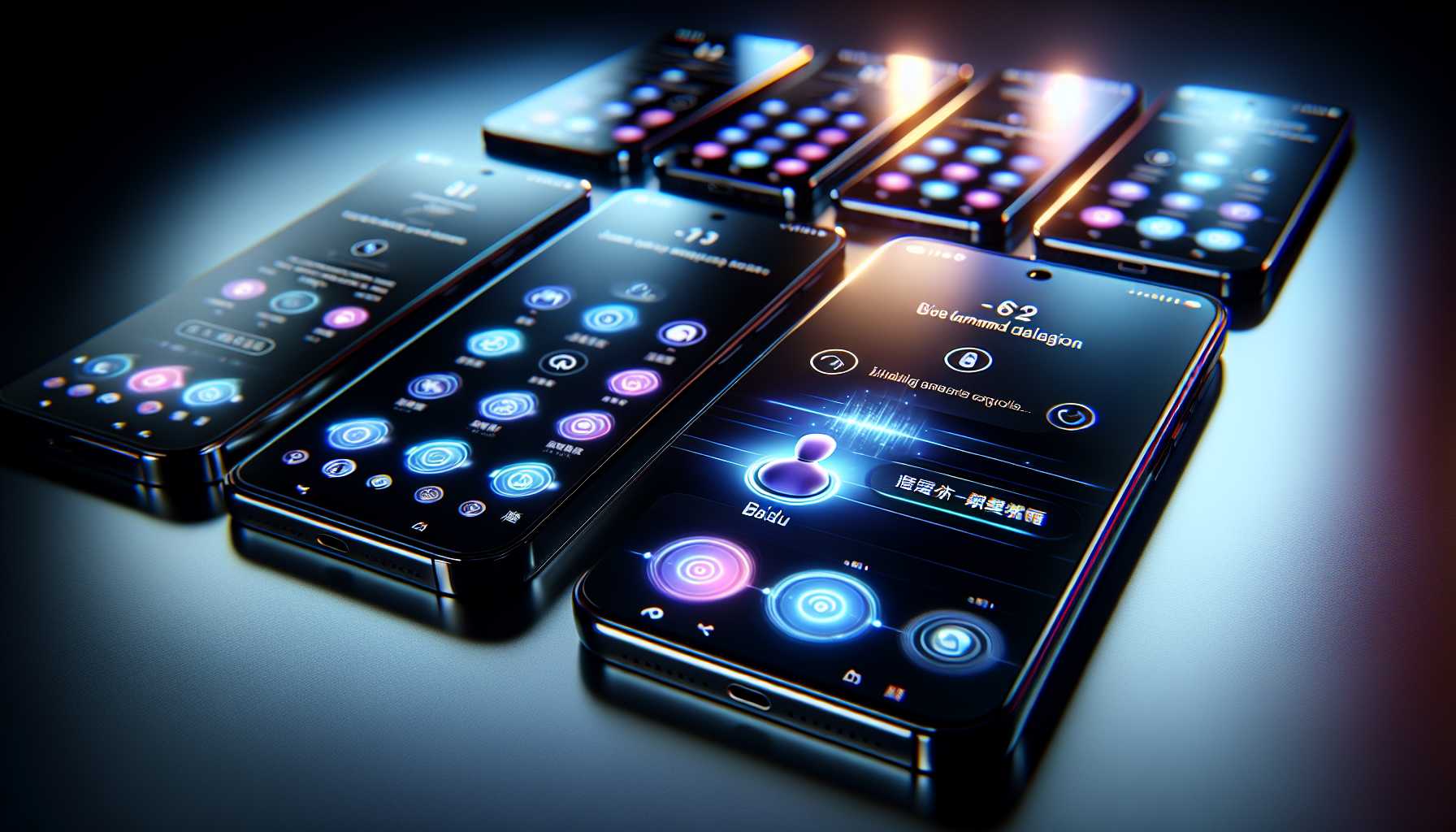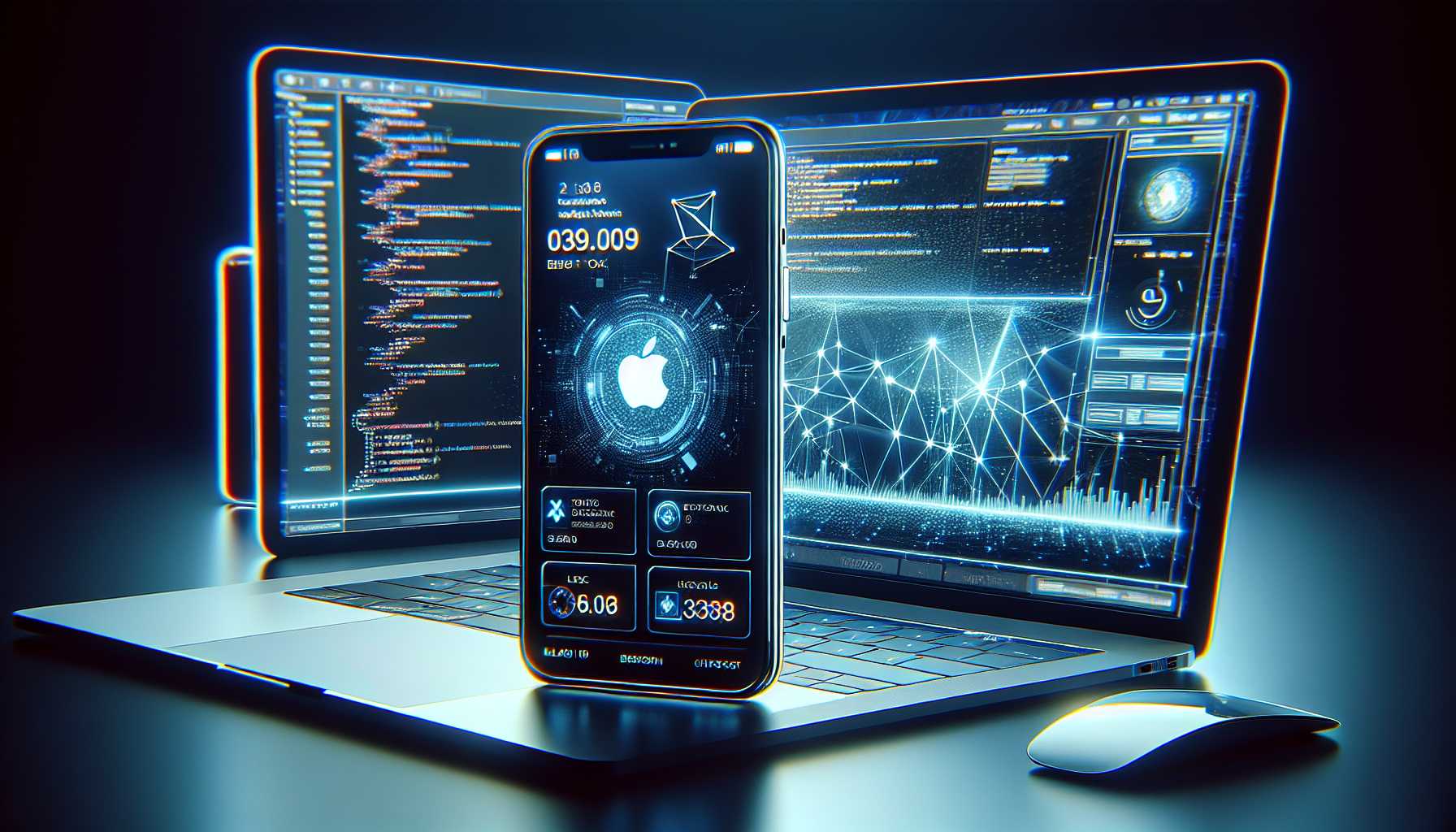The Era of Sleek Foldables: Honor Magic V2 Unveiled
 The foldable smartphone niche is rapidly evolving. It’s a space where tech enthusiasts and skeptics alike delight in the collision of innovation and practicality. Step in the Honor Magic V2, a device that dares to defy the bulky constraints of its predecessors. It challenges the idea that foldable phones must compromise on heft to offer that satisfying flip from phone to tablet. What sets the Magic V2 apart is its svelte form, rivaling the pocket presence of conventional smartphones. This isn’t just a device – it’s an experience you don’t even remember you’re carrying. With its inner display ready to blossom into a vibrant field of opportunity at a moment’s notice, the Magic V2 promises the functionality of a tablet without the burden of one. The Magic V2 isn’t without its foibles, alas. There’s the persistent plea for finer software refinements, something that competitors like Samsung and Google seem to handle with a tad more finesse. And though hardware may evoke envy, software plays catch-up. But let’s pause there – for all the technical dissection, the Magic V2 reaches closer to what many thought foldables ought to be: unobtrusive yet expansive when you most need it.
The foldable smartphone niche is rapidly evolving. It’s a space where tech enthusiasts and skeptics alike delight in the collision of innovation and practicality. Step in the Honor Magic V2, a device that dares to defy the bulky constraints of its predecessors. It challenges the idea that foldable phones must compromise on heft to offer that satisfying flip from phone to tablet. What sets the Magic V2 apart is its svelte form, rivaling the pocket presence of conventional smartphones. This isn’t just a device – it’s an experience you don’t even remember you’re carrying. With its inner display ready to blossom into a vibrant field of opportunity at a moment’s notice, the Magic V2 promises the functionality of a tablet without the burden of one. The Magic V2 isn’t without its foibles, alas. There’s the persistent plea for finer software refinements, something that competitors like Samsung and Google seem to handle with a tad more finesse. And though hardware may evoke envy, software plays catch-up. But let’s pause there – for all the technical dissection, the Magic V2 reaches closer to what many thought foldables ought to be: unobtrusive yet expansive when you most need it.
Seismic Shifts in AI and Processors: Samsung and Google’s Latest Forays
 Across the globe, in the land where the Great Wall looms as a testament to human ingenuity, another wall seems to be crumbling – the barrier between east and west in tech. Samsung’s Galaxy S24 lineup has aligned itself with Chinese AI titan Baidu, sidestepping Google in a notable divergence from the Western blueprint. This strategic partnership serves as a reminder that the tech industry’s tides are as variable as the sea’s. Meanwhile, the tech sphere whispers about Google’s clandestine undertaking – a native Chrome browser for Windows on ARM. It offers a tantalizing glimpse of what happens when the worlds of powerful processors and software giants converge. The debate rages on: whether ARM architecture will prove a worthy adversary to entrenched x86 primacy. The über-competitive processor landscape does not forgive stagnation, and the ARM revolution inches forward with Google’s endorsement. In this cutthroat domain, every fraction of efficiency and performance increment shapes the future of computing. But will it shape it enough? Only time will write that code.
Across the globe, in the land where the Great Wall looms as a testament to human ingenuity, another wall seems to be crumbling – the barrier between east and west in tech. Samsung’s Galaxy S24 lineup has aligned itself with Chinese AI titan Baidu, sidestepping Google in a notable divergence from the Western blueprint. This strategic partnership serves as a reminder that the tech industry’s tides are as variable as the sea’s. Meanwhile, the tech sphere whispers about Google’s clandestine undertaking – a native Chrome browser for Windows on ARM. It offers a tantalizing glimpse of what happens when the worlds of powerful processors and software giants converge. The debate rages on: whether ARM architecture will prove a worthy adversary to entrenched x86 primacy. The über-competitive processor landscape does not forgive stagnation, and the ARM revolution inches forward with Google’s endorsement. In this cutthroat domain, every fraction of efficiency and performance increment shapes the future of computing. But will it shape it enough? Only time will write that code.
The DMA Chronicles: Flipping the Script on Apples and Browsers
 As regulatory gears turn in the EU, they churn out new mandates, compelling titans like Apple to rethink their digital fortresses. The European Union’s Digital Markets Act (DMA) paints Apple into a corner, featuring a redesigned stage where choices are not Apple’s to orchestrate but the consumer’s to command. This unfolds in a realm where defaults are dismantled, and browser engines are no longer one-size-fits-Safari. Third-party browsers now wink at iOS users, and whispers of non-WebKit-based alternatives stir the pot of innovation. We may see a proliferation of features and a dash of dissonance in the usually harmonious Apple universe. The DMA’s aspirations are grand: to level the technological playing field and sow the seeds of competition in fertile ground. But as the enforcement date looms, the real impacts of these regulatory interventions remain in question. Will this be the rejuvenation of competitive vigor, or will it introduce chinks in the armor of user privacy and security?
As regulatory gears turn in the EU, they churn out new mandates, compelling titans like Apple to rethink their digital fortresses. The European Union’s Digital Markets Act (DMA) paints Apple into a corner, featuring a redesigned stage where choices are not Apple’s to orchestrate but the consumer’s to command. This unfolds in a realm where defaults are dismantled, and browser engines are no longer one-size-fits-Safari. Third-party browsers now wink at iOS users, and whispers of non-WebKit-based alternatives stir the pot of innovation. We may see a proliferation of features and a dash of dissonance in the usually harmonious Apple universe. The DMA’s aspirations are grand: to level the technological playing field and sow the seeds of competition in fertile ground. But as the enforcement date looms, the real impacts of these regulatory interventions remain in question. Will this be the rejuvenation of competitive vigor, or will it introduce chinks in the armor of user privacy and security?
Humanoids and Apple Pie: Tech Giants Betting on Robotics and Silicon
 Once the realm of science fiction, humanoid robots now take steps into reality, sporting new endorsements from industry luminaries like Bill Gates. This emerging cohort of metal-and-circuit bipeds, designed to navigate a human-constructed world, invokes intrigue as much as it does skepticism. Can these machines streamline our lives, or will they remain a novelty of innovation, impressive in their anthropomorphism yet lacking in utility? On a different note, the whispers of Apple’s tech ventures bring us back to a familiar taste: silicon. Reports swirl around the tech titan’s embrace of TSMC’s 2nm chip technology, promising to cast a long shadow over current 3nm chips in terms of performance and efficiency. Apple’s voracious appetite for cutting-edge silicon suggests this partnership is more than a mere flirtation—it marks the tech industry’s insatiable pursuit of ever-smaller and more potent transistors that power the devices intertwined with our daily lives.
Once the realm of science fiction, humanoid robots now take steps into reality, sporting new endorsements from industry luminaries like Bill Gates. This emerging cohort of metal-and-circuit bipeds, designed to navigate a human-constructed world, invokes intrigue as much as it does skepticism. Can these machines streamline our lives, or will they remain a novelty of innovation, impressive in their anthropomorphism yet lacking in utility? On a different note, the whispers of Apple’s tech ventures bring us back to a familiar taste: silicon. Reports swirl around the tech titan’s embrace of TSMC’s 2nm chip technology, promising to cast a long shadow over current 3nm chips in terms of performance and efficiency. Apple’s voracious appetite for cutting-edge silicon suggests this partnership is more than a mere flirtation—it marks the tech industry’s insatiable pursuit of ever-smaller and more potent transistors that power the devices intertwined with our daily lives.
Crypto Phones and Retrospectives: A Look at Solana and 40 Years of Mac
 They say timing is everything, a sentiment echoed by Solana Mobile’s recent foray into the web3 smartphone market. As the crypto winter thaws and new devices like the Solana Saga sell out, broader questions about cryptocurrency’s place in consumer tech hang in the balance. Is this synergy between blockchain and mobile technology a mere flash in the speculative pan, or could it herald a new chapter in decentralized digital transactions? And as one marvels at the contemporary marriage of tech and finance, a glance in the rearview mirror reveals an icon at a milestone: the Mac hits 40 years. From its 1984 inception, with an apocalyptic Ridley Scott-directed advert heralding its arrival, to the sleek performance titans of today bearing M-series chips, Mac’s journey is a testament to the evolution of personal computing. The question now is, what’s next for this enduring pioneer in the era of portable powerhouses and omnipresent connectivity? In this dynamic panorama of the tech landscape, the only constant is change. Today’s breakthrough may be tomorrow’s footnote in the annals of tech history, but the drive towards lighter, faster, and smarter remains the north star of the industry. From the quantum leap in foldable phone designs to the seismic shifts shaping Windows on ARM, EU regulations, robotics, and the foundational underpinnings of our beloved gadgets, the tapestry of technology continues to weave its intricate, unpredictable patterns.
They say timing is everything, a sentiment echoed by Solana Mobile’s recent foray into the web3 smartphone market. As the crypto winter thaws and new devices like the Solana Saga sell out, broader questions about cryptocurrency’s place in consumer tech hang in the balance. Is this synergy between blockchain and mobile technology a mere flash in the speculative pan, or could it herald a new chapter in decentralized digital transactions? And as one marvels at the contemporary marriage of tech and finance, a glance in the rearview mirror reveals an icon at a milestone: the Mac hits 40 years. From its 1984 inception, with an apocalyptic Ridley Scott-directed advert heralding its arrival, to the sleek performance titans of today bearing M-series chips, Mac’s journey is a testament to the evolution of personal computing. The question now is, what’s next for this enduring pioneer in the era of portable powerhouses and omnipresent connectivity? In this dynamic panorama of the tech landscape, the only constant is change. Today’s breakthrough may be tomorrow’s footnote in the annals of tech history, but the drive towards lighter, faster, and smarter remains the north star of the industry. From the quantum leap in foldable phone designs to the seismic shifts shaping Windows on ARM, EU regulations, robotics, and the foundational underpinnings of our beloved gadgets, the tapestry of technology continues to weave its intricate, unpredictable patterns.





